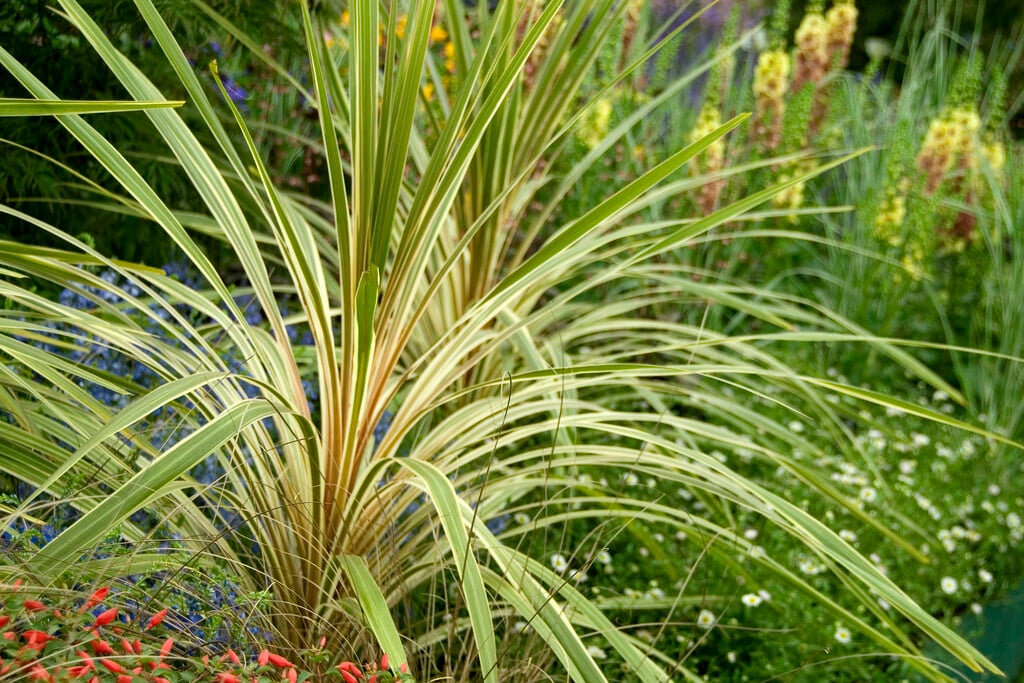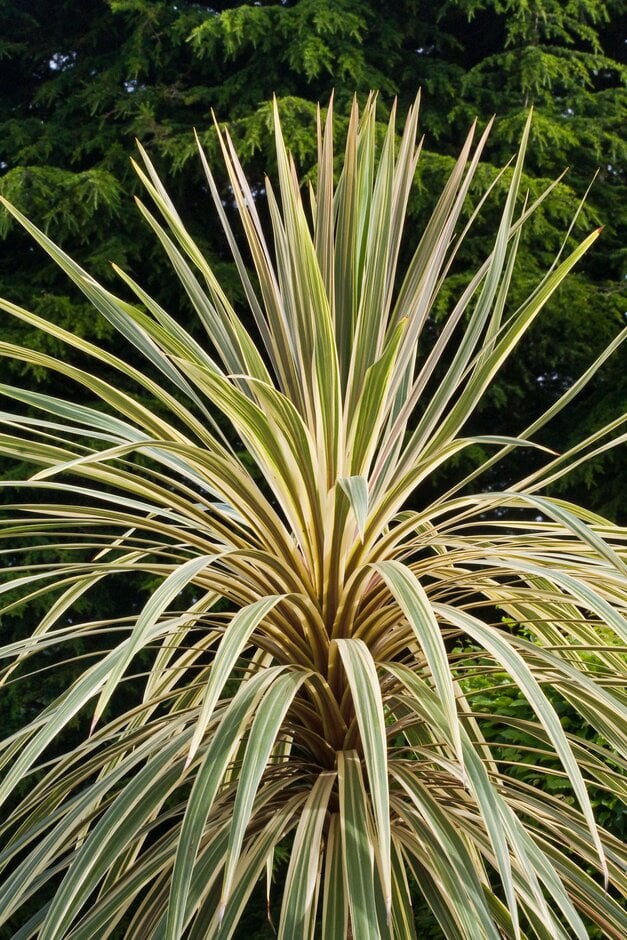Not the plant you're looking for? Search over 300,000 plants
Conservatory GreenhousePalms
Size
Ultimate height
2.5–4 metresTime to ultimate height
10–20 yearsUltimate spread
1–1.5 metresGrowing conditions
Chalk
Clay
Loam
Sand
Moisture
Moist but well–drained, Well–drainedpH
Acid, Alkaline, NeutralColour & scent
| Stem | Flower | Foliage | Fruit | |
| Spring | Green White | |||
|---|---|---|---|---|
| Summer | Green White | |||
| Autumn | Green White | |||
| Winter | Green White |
Position
- Full sun
- Partial shade
Aspect
South–facing or East–facing
Exposure
ShelteredDrought resistance
Yes Hardiness
H3Botanical details
- Family
- Asparagaceae
- Native to GB / Ireland
- No
- Foliage
- Evergreen
- Habit
- Bushy
- Genus
Cordyline are palm-like evergreen shrubs or tree-like perennials, with rosettes or tufts of linear or anrrowly lance-shaped, leathery leaves, and terminal panicles of fragrant, cup-shaped flowers followed by small. spherical berries
- Name status
Accepted
How to grow
Cultivation
Grow in well-drained soil in a sheltered position in full sun or partial shade
Propagation
Propagate by seed or suckers
Suggested planting locations and garden types
- City and courtyard gardens
- Mediterranean climate plants
- Architectural
- Coastal
- Cottage and informal garden
- Flower borders and beds
Pruning
Not usually pruned
Pests
May be susceptible to glasshouse red spider mite and scale insects
Diseases
May be susceptible to cordyline slime flux and honey fungus (rarely)
Get involved
The Royal Horticultural Society is the UK’s leading gardening charity. We aim to enrich everyone’s life through plants, and make the UK a greener and more beautiful place.

